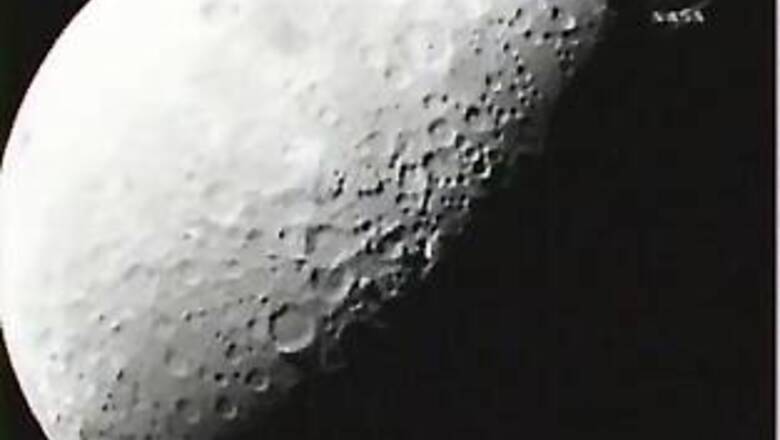
views
Washington: Using data from a NASA radar that flew aboard India's Chandrayaan-1 spacecraft, scientists have detected ice deposits totaling at least an estimated 600 million metric tons near the moon's north pole.
NASA's Mini-SAR instrument, a lightweight, synthetic aperture radar, found more than 40 small craters ranging in size from 2 to 15 km in diameter with water ice, the US space agency announced on Monday.
"The emerging picture from the multiple measurements and resulting data of the instruments on lunar missions indicates that water creation, migration, deposition and retention are occurring on the moon," said Paul Spudis, principal investigator of the Mini-SAR experiment at the Lunar and Planetary Institute in Houston.
"The new discoveries show the moon is an even more interesting and attractive scientific, exploration and operational destination than people had previously thought."
"After analysing the data, our science team determined a strong indication of water ice, a finding which will give future missions a new target to further explore and exploit," said Jason Crusan, programme executive for the Mini-RF Programme for NASA's Space Operations Mission Directorate in Washington.
The Mini-SAR's findings are consistent with recent findings of other NASA instruments and add to the growing scientific understanding of the multiple forms of water found on the moon, NASA said.
The agency's Moon Mineralogy Mapper discovered water molecules in the moon's polar regions, while water vapour was detected by NASA's Lunar Crater Observation and Sensing Satellite, or LCROSS.
Mini-SAR, a lightweight (less than 10 kg) imaging radar, and Moon Mineralogy Mapper are two of 11 instruments carried by the Indian Space Research Organisation's (ISRO) Chandrayaan-1.
The Mini-SAR has imaged many of the permanently shadowed regions that exist at both poles of the moon. These dark areas are extremely cold and it has been hypothesised that volatile material, including water ice, could be present in quantity there.
The main science object of the Mini-SAR experiment is to map and characterise any deposits that exist.
Numerous craters near the poles of the moon have interiors that are in permanent sun shadow. These areas are very cold and water ice is stable there, essentially indefinitely.
Fresh craters show high degrees of surface roughness (high circular polarisation ratio - CPR) both inside and outside the crater rim, caused by sharp rocks and block fields that are distributed over the entire crater area, NASA said.
However, Mini-SAR has found craters near the north pole that have high CPR inside, but not outside their rims. This relation suggests that the high CPR is not caused by roughness, but by some material that is restricted within the interiors of these craters.
"We interpret this relation as consistent with water ice present in these craters. The ice must be relatively pure and at least a couple of metres thick to give this signature," NASA said.
The estimated amount of water ice potentially present is comparable to the quantity estimated solely from the previous mission of Lunar Prospector's neutron data (several hundred million metric tons).
The variation in the estimates between Mini-SAR and the Lunar Prospector's neutron spectrometer is due to the fact that it only measures to depths of about one-half metre, so it would underestimate the total quantity of water ice present, NASA said.
At least some of the polar ice is mixed with lunar soil and thus, invisible to the NASA radar, it said.

















Comments
0 comment